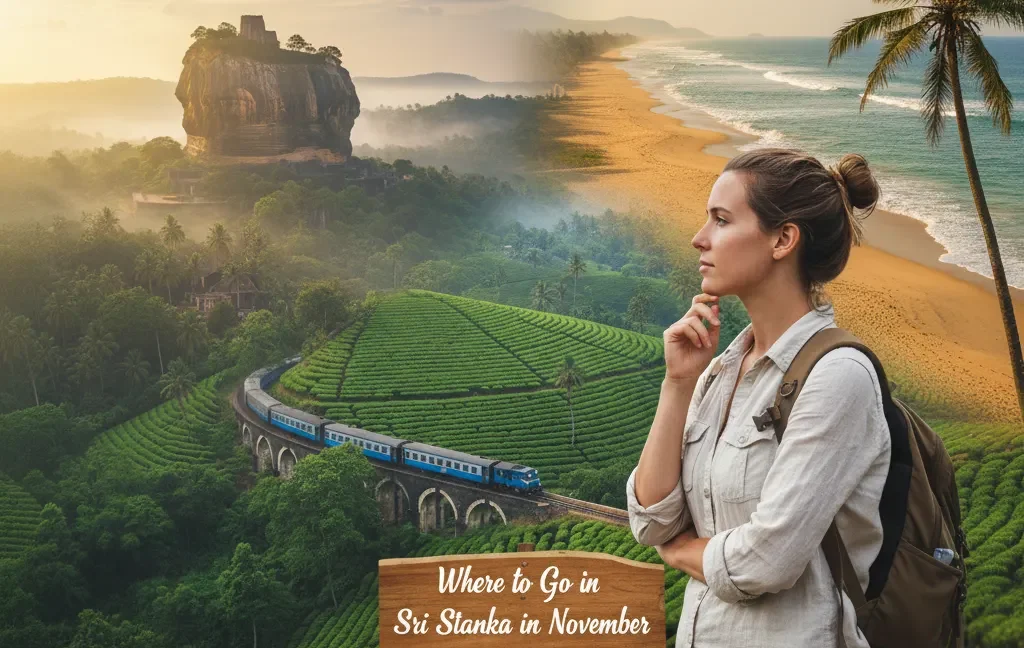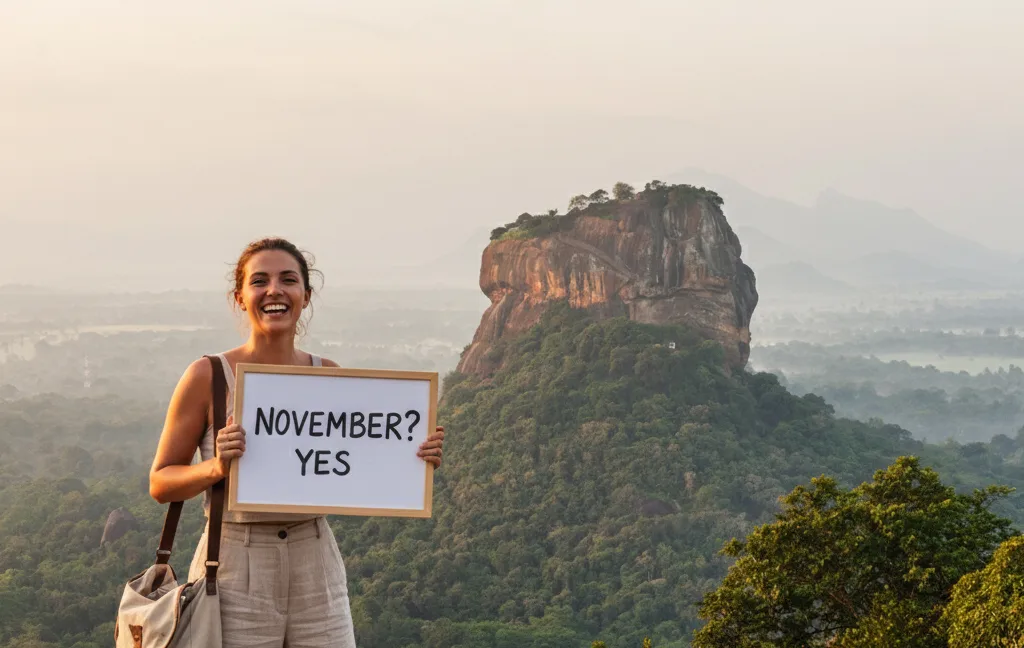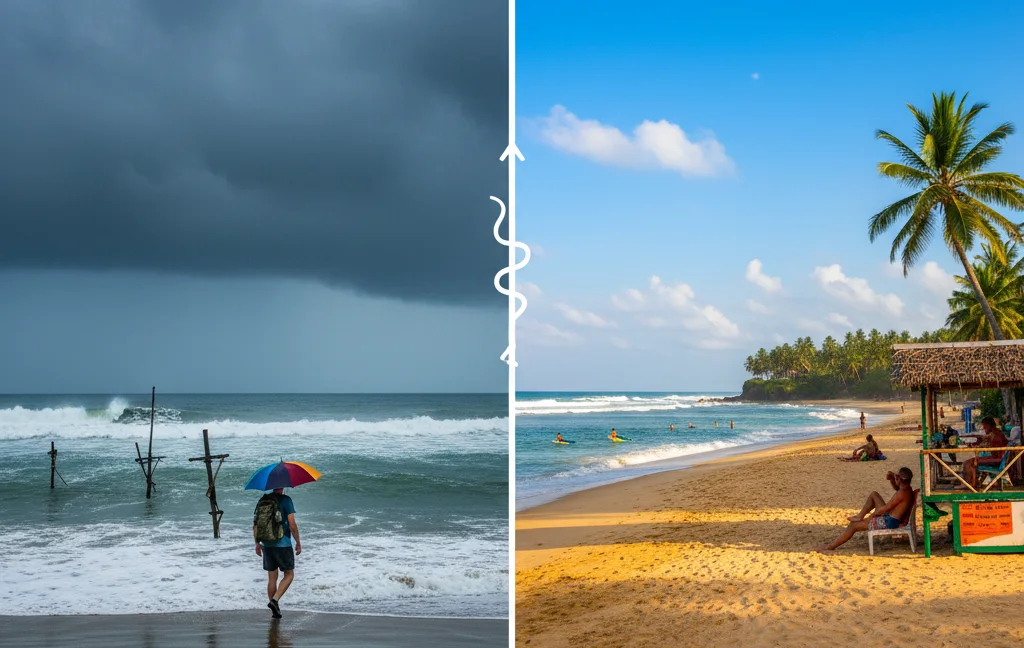Where to Go in Sri Lanka in November?
If you are a foreigner from the UK, Europe, the USA, or any other country looking to travel to Sri Lanka in November, then you might have this question. Is November a good time to visit Sri Lanka? November is a dynamic “shoulder season” month in Sri Lanka. It marks the switch from the southwest monsoon (closing on the west coast) to the northeast monsoon (starting in the north and east). This means the South and West Coasts are starting their sunny peak season, while the hills and the Cultural Triangle are lush and perfect for wildlife viewing, often with fewer crowds than later months.
The South and West Coast (Peak Season Begins) ☀️
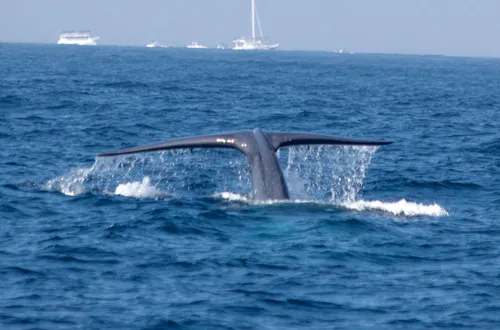
Mirissa
Whale Watching & Golden Beaches: A stunning crescent of sand known for its laid-back atmosphere. November is the official start of the peak whale watching season (November to April). The seas become calmer after the monsoon, offering excellent conditions for a morning boat trip (typically 3-5 hours) with a near 98% chance of spotting the majestic Blue Whale, the largest animal on Earth, as well as Sperm Whales and pods of dolphins.
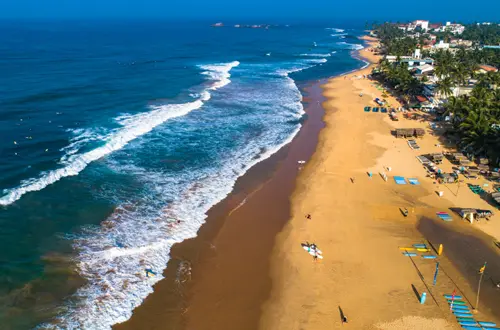
Hikkaduwa
Diving, Snorkeling & Reefs: A vibrant coastal town famous for its shallow coral sanctuary and accessible shipwrecks. November signals the return of prime diving conditions. Sea visibility rapidly improves from 8m to between 15 and 30 meters, making it ideal for viewing parrotfish, angelfish, and the occasional turtle on the coral reefs and the popular wreck sites.
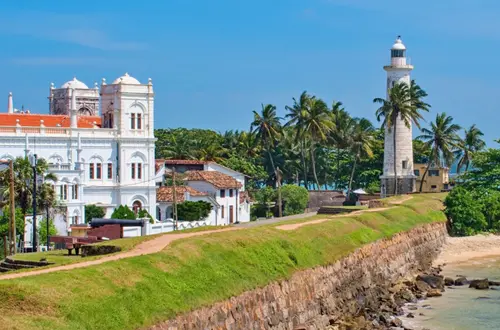
Galle Fort
Colonial History & Culture: A stunning UNESCO World Heritage Site; a living fort built by the Portuguese and extensively fortified by the Dutch. The climate in November is perfect for walking the ramparts in the late afternoon to witness a beautiful sunset over the Indian Ocean. Explore the grid of narrow streets, admiring the fusion of European architecture and South Asian tradition without the stifling humidity of the earlier monsoon or the heavy crowds of December.
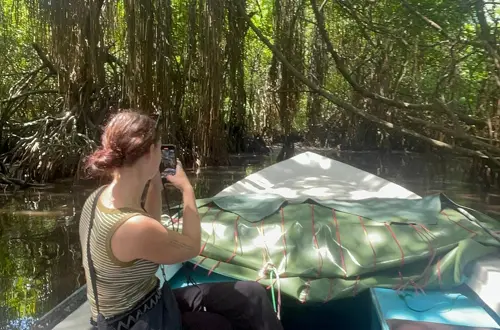
Bentota / Madu River
Watersports & Wetland Safari: Bentota is a watersports hub on a golden beach, while the nearby Madu River is a protected estuary. The Madu River Boat Safari is a must-do in November. The 1.5- to 2-hour boat trip is a tranquil journey through dense mangrove forests, stopping at the quaint Cinnamon Island to see the spice-making process and an ancient island temple, all within the calm, biodiverse waters.
The Cultural Triangle (Ancient Wonders & History) 🌳
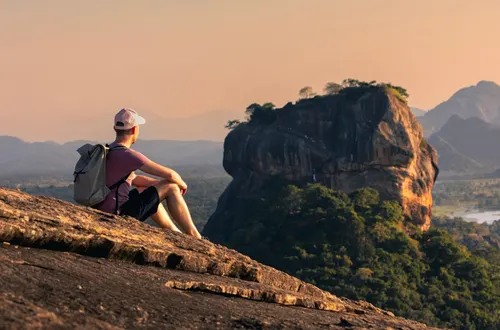
Sigiriya (Lion Rock)
The Sky Fortress: An ancient palace and rock fortress (UNESCO listed) rising dramatically 660ft above the surrounding plains, famous for its mirror wall, frescoes, and monumental lion paws. Climbing is best done in the very early morning (7:00 AM) to avoid the mid-day heat and potential afternoon rain showers. The air is cool, and the golden sunrise light illuminates the surrounding jungle canopy as you ascend.
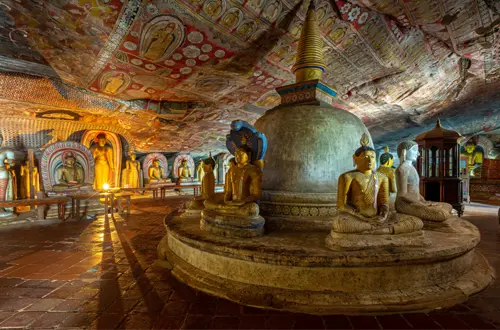
Dambulla Cave Temple
Golden Rock Temple: The largest and best-preserved cave complex in Sri Lanka, dating back to the 1st century BCE, housing 150 Buddha statues and vibrant rock ceiling murals. Visit early to beat the heat and crowds and enjoy the 300-step climb to the top. The temple’s location offers beautiful, clear views over the Cultural Triangle, often including the silhouette of Sigiriya Rock in the distance.
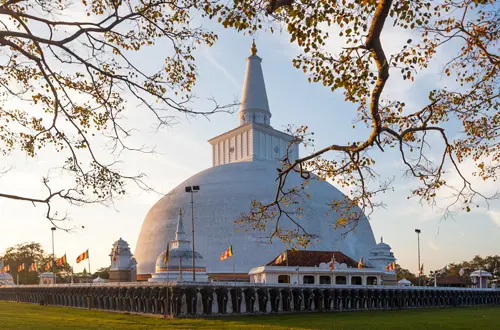
Anuradhapura & Polonnaruwa
Ancient Capitals: The ruins of sprawling ancient Sinhalese kingdoms, featuring gigantic brick stupas, sculpted moonstones, and historic irrigation works. November’s post-monsoon greenery offers a lush contrast to the ancient stone structures, creating wonderful photography conditions.
The Hill Country (Lush Scenery & Cool Climate) ☁️
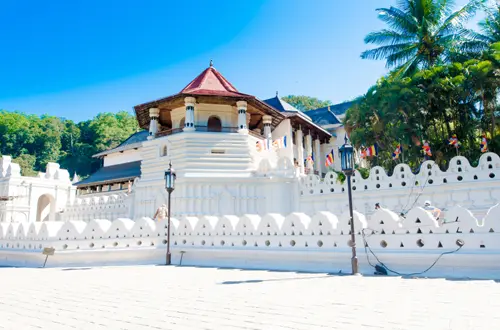
Kandy (Temple of the Tooth)
Sri Lanka’s Cultural Capital: A historic city nestled around a serene lake. It is home to the sacred Temple of the Tooth Relic. Plan your visit around one of the three daily Pooja ceremonies (dawn, noon, or evening) to witness the traditional drumming and devotion, which is especially moving in the cooler November atmosphere. Remember to dress modestly (shoulders and knees covered).
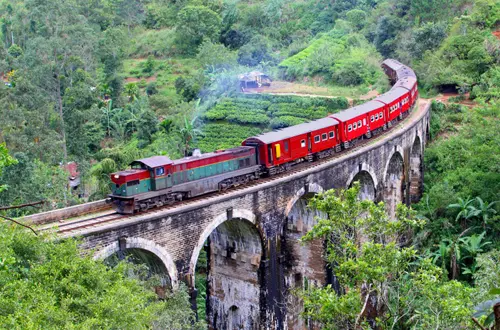
Scenic Train Journey
Kandy to Ella: Widely hailed as one of the world’s most spectacular train rides. The journey carves its way through tea country and mountains. For the best views of the landscape and the famous Nine Arch Bridge, try to secure a seat on the right side of the train from Kandy to Hatton/Nuwara Eliya, and then switch to the left side thereafter for the most famous mountain vistas.
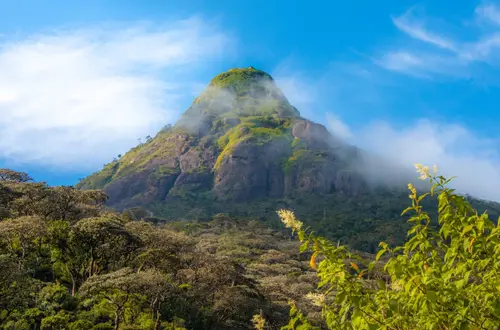
Adam’s Peak
Hiking and Views: A popular mountain town surrounded by waterfalls and tea plantations. Hike Little Adam’s Peak at sunrise to watch the mist lift from the valley floor and illuminate the surrounding mountains. While rain can occur, the temperatures are cool (around 18∘C to 25∘C), and the hills are at their greenest.
Wildlife Safaris & Adventure (High Viewing Success) 🐘
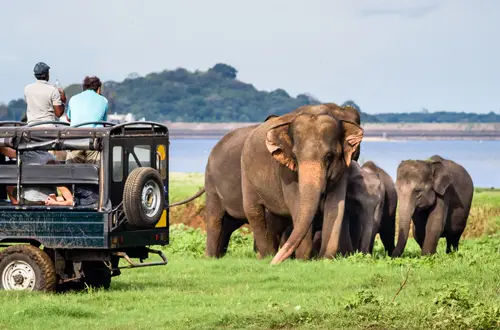
Yala National Park
Leopards & Diverse Wildlife: The park is famous for having one of the highest leopard densities in the world. November is a great transitional month for sightings. While rain can occur, the park is less crowded, and the wildlife, including leopards, sloth bears, and crocodiles, begin to congregate near lower water sources before the peak dry season arrives, offering high viewing success rates.
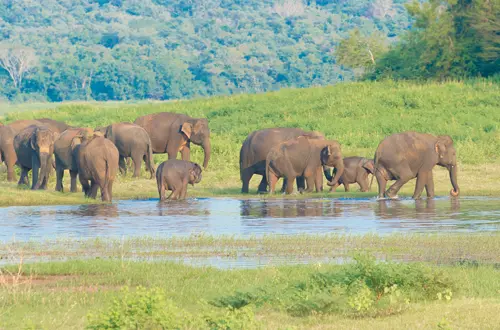
Udawalawe National Park
Elephant Sanctuary: A vast expanse of grasslands and forest centered around a reservoir, known for its permanent population of over 500 elephants. Elephant sightings are guaranteed year-round, and November is no exception. The environment is beautifully green post-monsoon, and the best time for a safari is early morning (6:00 AM) or late afternoon.
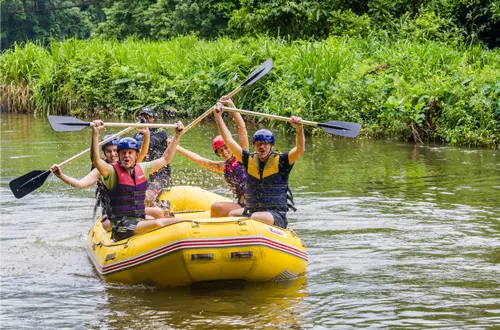
Kitulgala
White-Water Rafting: A small, misty town famous as the filming location for The Bridge on the River Kwai. The monsoon rains ensure excellent water levels in the Kelani River. This makes November a prime time for white-water rafting, offering a thrilling 5km stretch of Grade 2/3 rapids suitable for families (ages 10 and up) and adrenaline seekers.
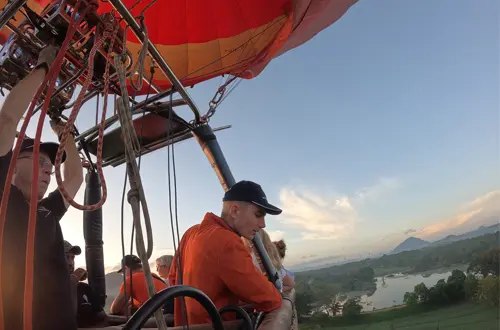
Hot Air Ballooning
Aerial Views of the Cultural Triangle: A spectacular way to see Sigiriya and the surrounding landscape. The official season for hot air balloon flights starts in November and runs through April. Taking off just after dawn, the experience lasts about one hour in the air, offering unparalleled views of Sigiriya Rock, the ancient lakes, and possibly wild elephants roaming below.

Arugam Bay
Surfing Mecca on the East Coast: Known for its world-class, long right-hand point breaks like Main Point, Arugam Bay is the epicenter of Sri Lankan surfing. November is a transitional and often surprisingly good month for surfing here. While the peak season is over, the waves can still be clean, consistent, and fun, especially for intermediate to advanced surfers. Crucially, the crowds are significantly lower than the peak months, offering a more relaxed experience.
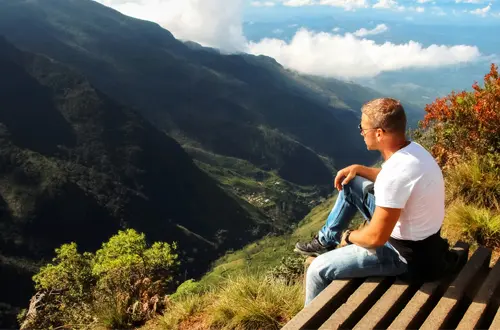
Horton Plains NP
High-Altitude Trekking: A UNESCO-listed World Heritage Site of cloud forests and grassy plains in the central highlands, home to endemic flora and fauna. The iconic 9.5 km circular trek to World’s End must be started between 6:00 AM and 7:00 AM in November. Clear views of the 880-meter cliff face are guaranteed only in the early morning before the mist and clouds roll in. The cool, crisp air makes for perfect hiking conditions for this moderately challenging trail.
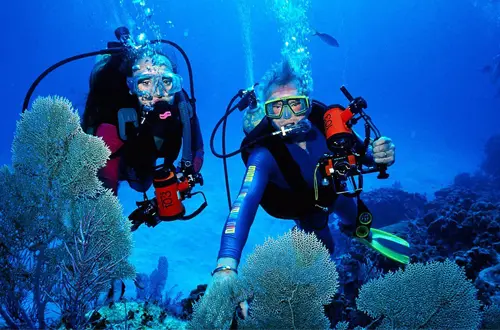
Trincomalee
Diving & Whale Watching (Seasonal Switch): A historic port city on the East Coast famous for its protected natural harbor, Pigeon Island Marine National Park, and offshore whale watching. November marks the definitive end of the East Coast diving season. Dive centers on this coast typically close around mid-November due to the start of the Northeast Monsoon, which brings rough seas and poor visibility. However, whale watching can still be possible in the first half of the month as the migration patterns transition.

